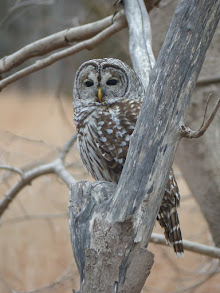
A specimen of dialect poetry, collected from Berkshire, England and included in
The Scouring of the White Horse (1859) by
Thomas Hughes.
The White Horse of Uffington (formerly in Berkshire, though it is now incorporated within Oxfordshire) is a prehistoric hill figure once often popularly associated with King Alfred, though it's apparently very much older. In order to keep the figure from being obscured, it must be periodically "scoured" of encroaching turf and replenished with chalk. The scourings, which have been conducted at irregular intervals for centuries, have been accompanied by various games and festivities. One of the games, at least in the mid-19th century, was a greased pig contest. Needless to say, this was likely more fun for the human participants and spectators than it was for the luckless porker.
The stanzas that follow should be fairly comprehensible if you understand that the standard English voiceless
f and
s sounds have become voiced
v and
z.
Peg = pig,
wur = was,
dree = three,
un = him, etc.
Backswryd (backsword) was some kind of fighting contest involving sticks;
spwoort = sport.
"Vathers, mothers, mothers' zons!
You as loves yer little wuns!
Happy pegs among the stubble,
Listen to a tale of trouble;
Listen, pegs in yeard and stye,
How the Barkshire chaps zard I.
"I wur barn at Kingstone-Lisle,
Wher I vrolicked var a while,
As vine a peg as e'er wur zeen
(One of a litter o' thirteen)
Till zome chaps wi' cussed spite
Aimed ov I to make a zite,
And to have a 'bit o' vun,'
Took I up to Uffington.
"Up, vorights the Castle mound
They did zet I on the ground;
Then a thousand chaps, or nigh,
Runned and hollered arter I —
Ther, then, I, till I wur blowed,
Runned and hollered all I knowed,
When, zo zure as pegs is pegs,
Eight chaps ketched I by the legs,
Two to each — 't is truth I tell 'ee —.
Dree more clasped I round the belly !
Under all they fellers lyin' —
Pegs! — I thought as I wur dyin'.
"But the Squire (I thenks I zee un),
Vanner Whitfield ridin' wi' un,
Fot I out o' all thuck caddle,
Stretched athurt the varmer's zaddle —
Bless 'em, pegs in yeard and stye,
Them two vrends as stuck to I.
"Barkshire men, vrom Hill and Vale,
All as ever hears this tale,
If to spwoort you be inclined,
Plaze to bear this here in mind —
Pegs beant made no race to win,
Be zhart o' wind, and tight o' skin,
Dwont 'ee hunt 'em, but instead
At backswyrd break each other's yead
Cheezes down the manger rowl —
Or try and clim the greasy powl.
"Pegs! in stubble yeard and stye,
May you be never zard like I,
Nor druv wi greasy ears and tail,
By men and bwoys drough White Horse Yale."
The reference to rolling cheeses down "the manger" alludes to a race in which participants run pell-mell down a steep hill into a nearby depression sometimes supposed to be the White Horse's feeding ground. The winner gets a cheese wheel, which as Hughes wryly observes must be rather a hard variety to survive the descent.
Illustration: "Chasing the Greased Pig" by
Richard Doyle, from
The Scouring of the White Horse by Thomas Hughes. Image scan by George P. Landow, courtesy of
the Victorian Web.








